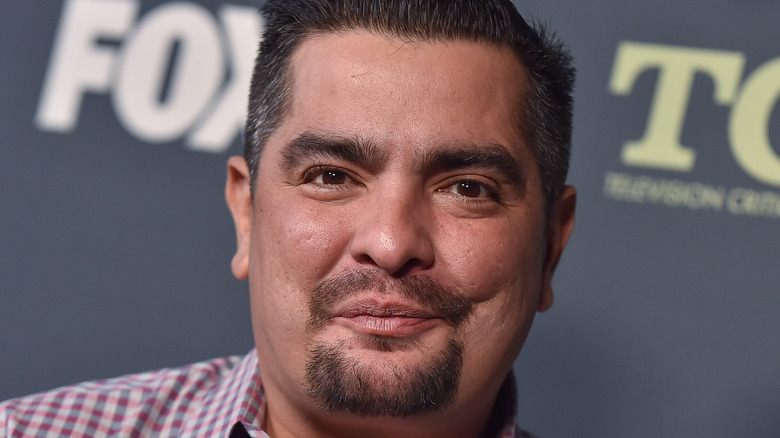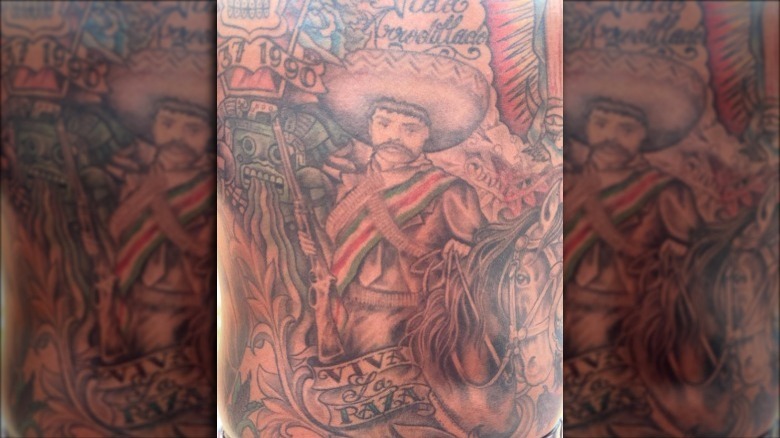Aarón Sánchez Reveals The Meaning Behind The 'Epic' Tattoo On His Back
Aarón Sánchez is no stranger to creative expression. Known for making flavorful foods that combine innovation and tradition, this celebrity chef doesn't limit his creative outlets to just food. Sánchez also enjoys expressing himself through body art, in the form of storytelling through tattoos. The Chopped judge has previously shared some of his art, such as an armpit tattoo of Pancho Villa and a somewhat cliche knife near his elbow, yet these images are only an appetizer of his extensive set of body art.
Sánchez is actually part owner of Daredevil Tattoo with Brad Fink and Michelle Myles, a destination highly popular with food workers in New York City (via Hattiesburg American). A man who's covered in tattoos, Sánchez originally visited the shop as a customer who paid for tattoos with food before eventually buying in as a partner. Each tattoo has a story of some kind, and Sánchez recently shared more info with fans about his large back tat. He began, "Here's another story behind one of my favorite tattoos. On my back is this epic portrait of Emiliano Zapata" (via Instagram).
Aarón Sánchez experesses himself through body art
Continuing his Instagram explanation, the chef shared, "One of my favorite quotes of his is, "I'd rather die on my feet, than live on my knees." For me that means never compromising who you are as a person, and standing strong in the face of adversity.#laraza #zapata #tattoo #mexiCAN." Included was a picture of the "epic portrait" showing Emiliano Zapata on horseback surrounded by ornate decorations and words.
Zapata's sash has the colors of the Mexican flag – green, white, and red (via WorldAtlas.com) – and highlights of color can be found throughout other details, including what appears to be a green mask. Among the other noticeable elements is the phrase "Viva La Raza," which sociology professor Philip Lampe described as a unifying phrase used by Mexican Americans who self-identify as Chicano and which is associated with the Chicano Movement of the 1960s (via JSTOR).
For those not familiar with Zapata, he was a Mexican revolutionary and agrarian leader who lived from 1879 to 1919 (via Brittanica). Zapata and his fellow farmers used guerrilla tactics to achieve their goals during the Mexican Revolution.

